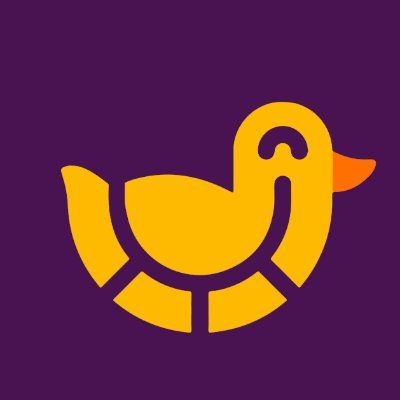Online Poker Stats: Game-Changing Insights
When the first online gambling sites emerged in the 1990s, they opened up a new world for poker enthusiasts. However, it was in the early 2000s that online poker truly began to take shape.
Today, the online poker industry shows no signs of slowing down. Projections indicate a staggering market value of $283.42 billion by 2032, underscoring its enduring popularity and remarkable potential.
Whether you’re a seasoned player or a curious enthusiast, this blog post will provide invaluable insights into the trends, demographics, and advancements shaping the dynamic world of online poker.
Highlights of the Article
- Chris Moneymaker’s 2003 tourney win led to a 200% increase in entrants the following year.
- Lockdown drives 43% growth in the online poker market.
- 25%-30% of online poker players use 4 or more poker websites.
- There is an annual increase of 34% in new poker players worldwide.
- High-stakes online poker can bring around a $2,000 monthly salary or higher.
- Only 10% of online poker players are female.
- Around 30% of poker players are long-term winners, and about 10% are significant winners.
- The online poker market is projected to reach about $283.42 Billion in 2032.
How Many People Play Online Poker?

The online poker player count is massive, with a 100 million player base worldwide and 60 million players residing in the US.
The online poker industry statistics below serve as a testament to the game’s global popularity and provide insights into its industry growth, player preferences and behavior, and evolving strategies, enabling players to stay competitive.
Online Poker Usage Statistics
Discover the story behind the “Moneymaker Effect” and how it ignited a seismic shift in the online poker landscape.
These statistics provide valuable information about the popularity and extent of online poker usage, painting a clear picture of the number of individuals actively participating in this industry.
1. First-time Poker players have increased by nearly 255% in the lockdown period.
(LinkedIn, Optimove)
According to Optimove, a significant portion of these players, ranging from 50% to 75%, had previously engaged in sports betting on the same platform before venturing into poker.
Jed Hoffman, an experienced online poker player, has observed a 300% increase in activity on his preferred poker site in the past month.
First-time players effect the poker business long-term. Online poker platforms can survive by giving beginner-friendly tools, training, and promotional incentives to retain and develop gamers.
2. In 2004, the year following Chris Moneymaker’s win, the number of entrants increased by over 200%.
(GBGC Analysis)
At the time, online poker was relatively new. Moneymaker, a novice player who qualified for the WSOP 2003 Main Event through an online satellite, earned $2.5 million with a buy-in of just $86.
Another amateur player, Greg Raymer, won $5 million the following year. The year after that, $7.5 million was the top prize.
Moneymaker’s win marked a turning point and motivated numerous players to try online poker, substantially increasing the player base and the industry’s overall growth.
3. Real money poker online is legal in only 5 states of the US.
(PokerNews)
More US states are expected to legalize online poker for real money soon. But as of today, here are the states where real money poker online is legal:
- New Jersey
- Delaware
- Pennsylvania
- Nevada
- Michigan
Here are more countries where online poker is legal per region:
North America
- Canada
Europe
- United Kingdom
- France
- Italy
- Spain
- Germany
- Portugal
- Sweden
- Denmark
- Estonia
Asia-Pacific
- Australia
- India
- Mongolia
- Papua New Guinea – Online poker sites in Papua New Guinea are legal as of June 2019. However, as of today, no company has been granted a license for offering online poker content.
Latin America
- Colombia
It is difficult to predict precisely where online poker will be headed regarding legislation in 2023. The regulatory framework surrounding online poker is constantly evolving.
4. The lockdown has increased the online Poker gaming market by nearly 43%.
(Gammastack)
In March 2020, online poker statistics in New Jersey, a prominent US gambling hub, showed a revenue of $3.6 million, representing a remarkable 90.9% surge from March 2019.
Limited legal options led to increased online poker activity as individuals sought the convenience of playing online.
5. A 2010 survey revealed that 25%-30% of online poker players use 4 or more different poker websites.
(GBGC Analysis)
The figure highlights a trend of diversification among online poker players. This may suggest that players seek varied experiences, game offerings, promotions, or features that different platforms may provide.
6. Every year, there is a 34% increase in new poker players worldwide.
(Gitnux)
It was estimated that during the boom years of online poker, which spanned from approximately 2003 to 2006, the player base of the sport doubled annually, according to estimates.
With a growing player pool, players can engage in a lively community, explore new opportunities, and enhance their skills and knowledge.
7. Roughly 40 million individuals across the globe engage in online poker annually.
(WOSP)
Online poker offers motivations like money, prizes, and fun, providing a fast and accessible alternative to live games. With user-friendly interfaces and professional dealers, players can navigate virtual tables, make quick decisions, and enjoy a fair experience.
Online Poker Market Size Statistics
Understand the true magnitude of the online poker industry, with the market projected to grow at a Compound Annual Growth Rate (CAGR) of 12.7% from 2023 to 2032.
These statistics will provide insights into its significance and highlight the immense scale and financial opportunities for entrepreneurs and investors to tap into.
8. In 2022, the global online poker market was valued at $86.12 Billion.
(Polaris Market Research)
Factors like accessibility, global reach, technology, marketing, regulations, revenue, and competition contribute to the value of the online poker market, making it a lucrative and dynamic industry.
9. The largest WSOP tournament attracted a record-breaking 8,773 participants.
(Casino.org)
The WSOP 2006 Main Event still holds the title for the largest tournament, generating a prize pool of $82.5 million, the largest in WSOP history.
The WSOP is a prestigious annual poker tournament series known for its high stakes and global recognition. It has elevated the game of poker and motivated players worldwide, contributing to its growth and appeal.
10. The WSOP has given out over $3.29 billion in prize money since its inception.
(Gitnux)
The inaugural WSOP tournament occurred in 1971, with seven players paying a $5,000 buy-in. Johnny Moss emerged as the rightful champion after two days of play.
Jamie Gold marked the first instance of a winner earning an eight-figure sum with $12 million during the 2006 WSOP Main Event, representing a substantial increase compared to the previous years.
Other 8-figure earners were:
- 2022 WSOP Main Event – Espen Jorstad ($10 million prize)
- 2019 WSOP Main Event – Hossein Ensan ($10 million prize)
- 2014 WSOP Main Event – Martin Jacobson ($10 million prize)
11. NL100, the highest online poker stakes, can bring around a $2,000 monthly salary or higher.
(Rookie Road)
Beginning at the lowest limit, players can make around $150 monthly. At the next stake, NL5, it can reach up to $250 monthly. These are the two lowest levels and are mainly used to hone skills.
At NL50, players can earn up to $1,250. And the highest online poker stakes, NL100, are around $2,000 monthly.
This data sheds light on the financial opportunities available in online poker, demonstrating the industry’s earning potential, economic viability, and career possibilities.
12. The gross revenue of online poker sites approved by the National Gaming Authority in France amounted to nearly €430 million in 2020.
(Statista)
France placed 3rd of the top 10 countries with the most players in 2010, with a staggering number of 445,860 active players.
The country has a significant player base and a regulatory framework that allows licensed and regulated operators to cater to French players.
13. In 2022, New Jersey’s online poker revenue was down to $27.4 million, while live poker was back to full strength.
(Pokernews)
In 2021, online poker revenue ranged from $2.3 million to $2.4 million in most months. Overall, the legal poker sites generated $29.9 million in revenue. However, in 2022, New Jersey’s online poker revenue hit $27.3 million, down approximately 8.5% compared to 2021.
The largest drop-off year-over-year when comparing 2022 to 2021 results was July, which saw a 25.9% decline. Here is the data that shows the month-by-month comparison:
| Month | 2022 Revenue (in millions) | 2021 Revenue (in millions) |
| January | $2.5 | $2.7 |
| February | $2.2 | $2.4 |
| March | $2.5 | $2.6 |
| April | $2.2 | $2.4 |
| May | $2.3 | $2.4 |
| June | $2.1 | $2.2 |
| July | $2.2 | $3.07 |
| August | $2.2 | $2.4 |
| September | $2.2 | $2.4 |
| October | $2.2 | $2.4 |
| November | $2.1 | $2.1 |
| December | $2.1 | $2.3 |
The data presented highlights how the availability of live poker can influence the revenue generated by online platforms.
Online Poker Player Demographics
Explore the representation of gender in online poker, shedding light on the current imbalance and the need for greater inclusivity.
These demographic statistics will highlight players’ global reach and participation from various countries and provide a valuable understanding of players’ age distribution, revealing its generational appeal.
14. Over 40% of online poker players are between 18-25.
(Gitnux)
The significant representation of the age group suggests a strong interest from the younger generation, which can contribute to the overall expansion and longevity of the online poker market.
This insight can also inform decisions regarding product development, platform innovations, and marketing campaigns to align with this demographic’s evolving needs and expectations.
15. Only around 10% of online poker players are female.
(Pokerati)
Gambling, in general, is a male-dominated industry. Furthermore, female participation in live poker tournaments is often below 5%.
Approximately one-third of online poker players are estimated to be female, but obtaining precise figures is challenging due to gender-related identity concealment.
This highlights the industry’s opportunity to promote inclusivity and attract a more diverse player base.
16. Nearly every fourth poker player is an American (23.71%).
(UNLV Gaming Research & Review Journal)
In 2010, about one in four online poker players worldwide were Americans (23.71%), while the German market accounted for 9.64%.
Below are the top 10 countries with the highest number of active poker players in 2010:
| Rank | Country | Number of Active Players | Share of all players in the world |
| 1 | USA | 1,429,943 | 23.71% |
| 2 | Germany | 581,350 | 9.64% |
| 3 | France | 445,860 | 7.39% |
| 4 | Russia | 401,701 | 6.66% |
| 5 | Canada | 345,971 | 5.74% |
| 6 | Great Britain | 269,247 | 4.47% |
| 7 | Spain | 253,043 | 4.20% |
| 8 | Netherlands | 239,700 | 3.98% |
| 9 | Brazil | 153,889 | 2.55% |
| 10 | Australia | 129,714 | 2.15% |
The ten countries with the most players accounted for 73.92% of online poker players worldwide in 2010.
The popularity of poker among Americans may stem from cultural factors like card game tradition, media influence, and the availability of venues and online platforms.
17. In 2010, among the countries with more than 100,000 internet users, the proportion of online poker players was highest for Hungary, with 1.983%.
(UNLV Gaming Research & Review Journal)
1 in 50 Hungarians plays online poker for real money, while the US holds the largest market yet ranks 36th in internet users. Approximately 0.596% of American internet users are online poker players (1 in 168).
Presented below are the top 10 countries with the highest proportion of online poker players per internet user (only countries with more than 100,000 internet users) in 2010:
| Rank | Country | Active Players | Internet Users | The proportion of Online Poker Players per Internet Users |
| 1 | Hungary | 122,482 | 6,176,400 | 1.983% |
| 2 | Estonia | 19,212 | 969,700 | 1.981% |
| 3 | Portugal | 100,075 | 5,168,800 | 1.936% |
| 4 | Denmark | 90,532 | 4,750,500 | 1.906% |
| 5 | Iceland | 4,996 | 301,600 | 1.657% |
| 6 | Netherlands | 239,700 | 14,872,200 | 1.612% |
| 7 | Finland | 71,543 | 4,480,900 | 1.597% |
| 8 | Cyprus | 6,445 | 433,800 | 1.486% |
| 9 | Norway | 64,535 | 4,431,100 | 1.456% |
| 10 | Slovenia | 18,899 | 1,298,500 | 1.455% |
The US market’s lower ranking can be attributed to the regulatory impact of the UIGEA. The law continues to shape the country’s online poker landscape, influencing participation rates and the market’s position globally.
18. Most places allow gambling for ages ranging from 18 to 21.
(Gamblers Daily Digest)
Here is a list of countries along with their respective legal age requirements to play online poker:
| Country | Legal Age Requirement |
| United States | 21 years old |
| Canada | 19 years old |
| United Kingdom | 18 years old |
| France | 18 years old |
| Italy | 18 years old |
| Spain | 18 years old |
| Germany | 18 years old |
| Portugal | 18 years old |
| Sweden | 18 years old |
| Denmark | 18 years old |
| Estonia | 21 years old |
| Australia | 18 to 21 years old |
| India | 18 years old |
| Mongolia | 21 years old |
| Colombia | 18 years old |
Age requirements in online poker help balance allowing adults to enjoy online poker responsibly and protecting against the potential harms of excessive gambling or underage participation.
Online Poker Win/Loss Statistics
Success and defeat coexist within online poker, creating an environment that demands skill, strategy, and a touch of luck.
Examine the statistical breakdown of players who emerged victorious alongside the tales of those who have experienced the greatest losses in online poker history.
19. Around 30% of poker players are winners over the long term, and about 10% are significant winners.
(Blackrain79)
Out of the 609 players who had played at least 10,000 hands, only about 30% were profitable after the rake.
- 18% of players were solid winners
- 49% were moderate to significant losers
- The 33% of remaining players fell into either small winners or small losers.
Players can use these statistics as benchmarks to assess their results, aiming to surpass the average success rates and striving to become part of the elite 10% of significant winners.
20. Cirque Du Soleil’s founder lost over $26 million in online poker, the most significant loss in history.
(SoMuchPoker)
The founder and former CEO of Cirque du Soleil, Guy Laliberté, with a wealth estimated well above $2 billion, has been an active poker player for years.
It is widely speculated that Laliberté has used various screen names in online poker, such as “noataima,” “lady marmelade,” “patatino,” and “Zypherin.” If these aliases are associated with Guy Laliberté, his online losses are estimated to surpass $26 million.
This data serves as a reminder of the potential pitfalls of high-stakes gambling and offers insights into the realities of the online poker landscape.
21. Antonius won the giant pot in online poker history, scooping a massive pot worth $1,357,000.
(HighstakesDB)
Patrik Antonius started playing with a mere $200 deposit in 2003 but quickly grew it to $20,000 within a few months of multi-tabling.
During a high-stakes PLO cash game, Antonius played against Viktor ‘Isildur1’ Blom in one of the most memorable online poker encounters, winning the biggest pot in online poker history.
However, he also had a huge loss when he took up the Tom ‘Durrrr’ Dwan heads-up challenge and lost over $2 million.
The stats highlight the unpredictability of online poker. They demonstrate the potential for remarkable successes and significant losses, emphasizing the importance of skill, strategy, and risk management in this competitive gaming environment.
Online Poker Trends Statistics
Discover the latest trends in the dynamic world of online poker through insightful statistics, revealing the industry’s growth and future potential.
With the shifting dynamics of game preferences and the rising popularity of streaming platforms, stay informed about the emerging trends shaping the online poker landscape.
22. Online poker market size revenue is projected to reach about $283.42 Billion in 2032.
(Polaris Market Research)
The global online poker market is expected to grow due to the increasing use of smartphones and internet usage worldwide.
As of January 2023, there were 5.44 billion unique mobile users worldwide, representing over two-thirds of the global population. Internet users are projected to reach 5.16 billion, accounting for 64.4% of the world’s population.
These statistics and trends indicate a promising future for the global online poker market, highlighting the immense potential for growth and profitability in the coming years.
23. Online poker runs roughly 4 to 5 times faster than live poker.
(WSOP)
Players who prefer a fast-paced and action-packed experience will benefit from this information, as it allows them to engage in more hands and tournaments within a shorter period.
Additionally, online poker operators and platforms can leverage this insight to market their services as a convenient and time-efficient option for players seeking quick and dynamic gameplay.
24. LexVeldhuis is the #1 Poker streamer on Twitch, with 376,607 viewer hours as of June 2023.
(TwitchMetrics)
Live streaming has revolutionized how online poker is perceived, creating a dynamic and interactive environment that continues to grow the game.
Here’s a list of other online poker streamers on Twitch with their corresponding view hours:
- ZerosPoker – 326,710
- TritonPoker – 220,919
- ALOHADANCETV – 207,405
- Spraggy – 205,913
- PokerStars247 – 144,152
Closing Remarks
Online poker has become popular due to its convenience and accessibility. Additionally, live streaming platforms and the integration of AI have reshaped interaction in the online poker community.
The international nature of online poker fosters a competitive ecosystem, although gender disparity remains a challenge.
These online poker stats highlight the evolving nature of the industry, its potential for growth, and the opportunities and challenges it presents to players, operators, and the broader poker community.
FAQ
What percentage of online poker players win?
Around 30% of poker players are winners over the long term, and about 10% are significant winners.
What are good online poker stats?
VPIP, PFR, AF, 3Bet%, and ATS are the best online poker statistics software.
Is it profitable to play online poker?
Yes. Depending on their skills, players can earn up to $2,000 monthly.
Who is the most successful online poker player?
Germany’s Dominick Nitche remains one of the most revered online poker players, with over $7 million in online tournament winnings.
 BC.Game
BC.Game  7Bit
7Bit  Ducky Luck
Ducky Luck  Red Dog
Red Dog